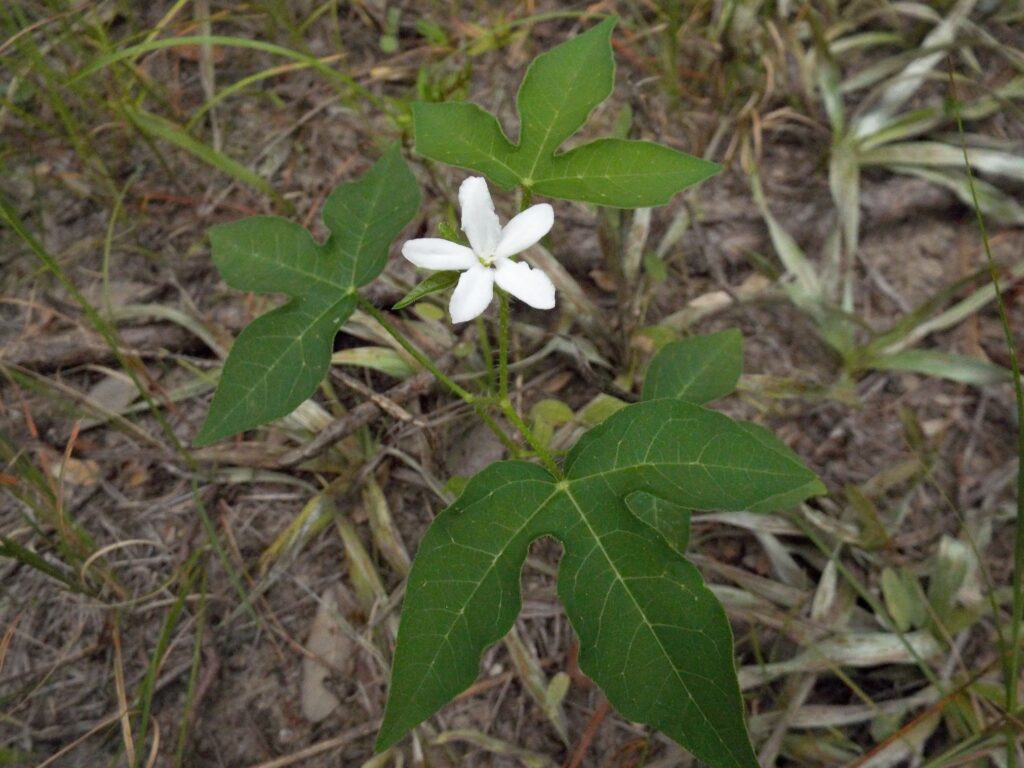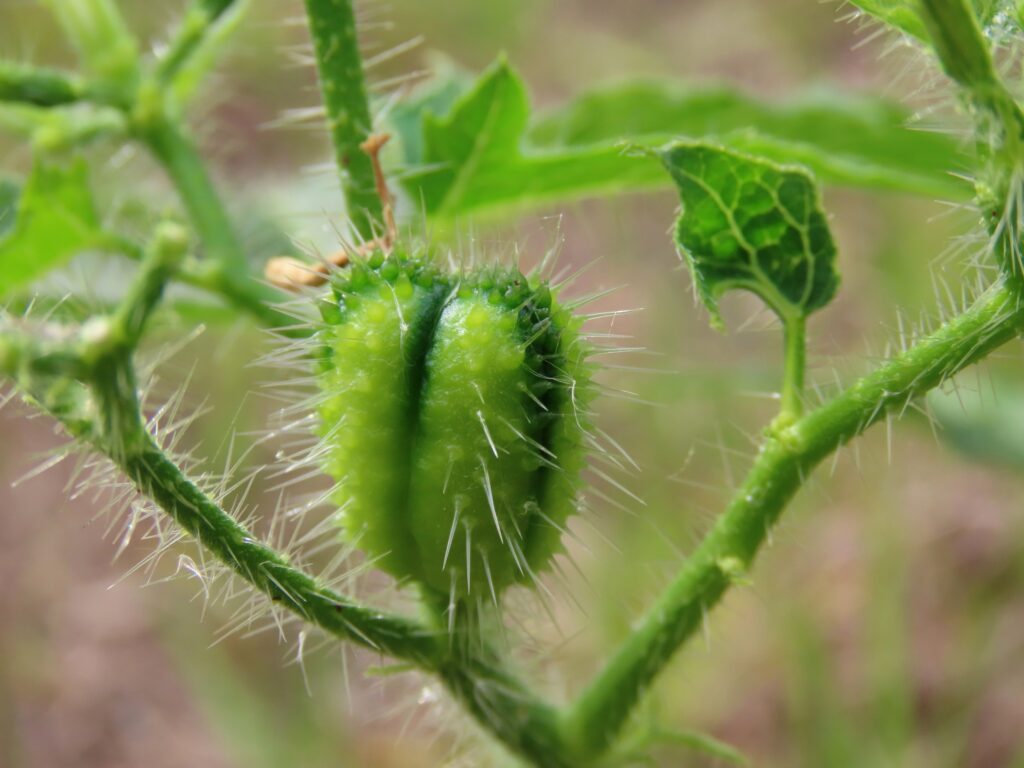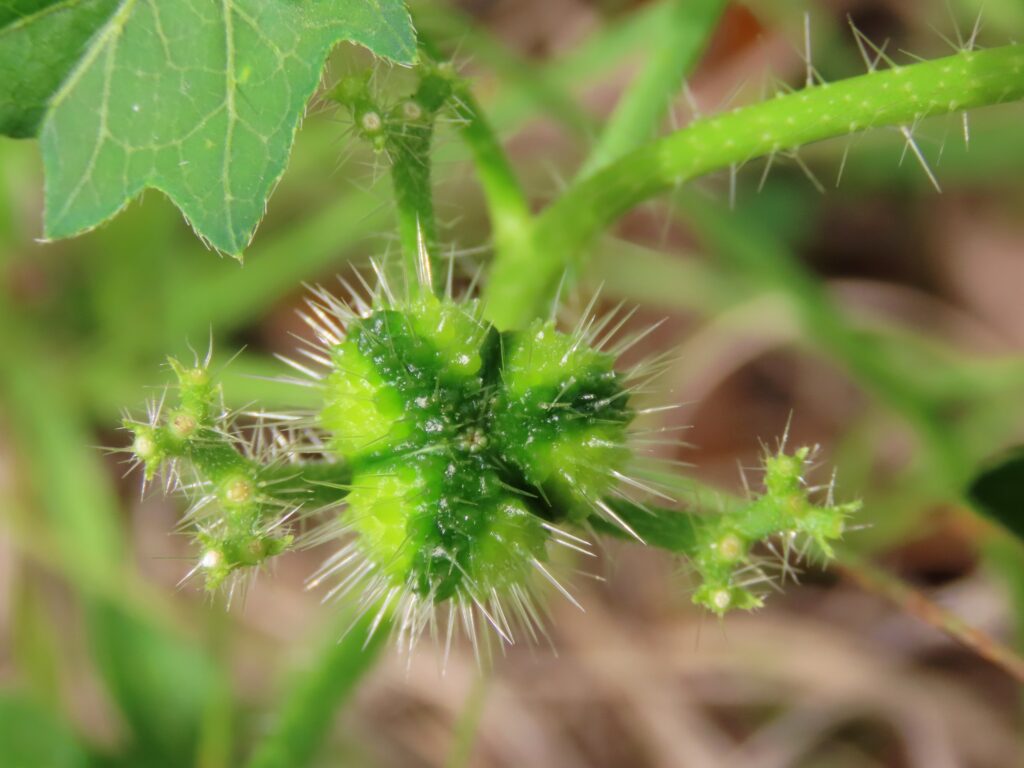



This week for Flora and Fauna Friday we have a modest and irritating wildflower, the Spurge Nettle (Cnidoscolus stimulosus).
The Spurge Nettle is a small perennial wildflower found in drier sandy soils across Edisto Island. It has largish palmate leaves with three or five lobes. Unlike true nettles, it’s a member of the Spurge family, Euphorbiaceae. As I’ve explained before, this family has some unique and complex floral anatomy. However, Spurge Nettle has converted that anatomy to something resembling a more traditional flower. Spurge Nettle has a brilliant-white five-petal flower. The flowers are monoecious, each being either male or female. It blooms nearly year-round. They have a robust taproot which helps them hang on in the dry, sandy, and often disturbed ecosystems where they are found. This taproot is edible when cooked but probably better off left alone as I’ll explain below.
Spurge Nettle’s claim to fame is its defensive nature. Spurge Nettle is veiled in an aura of urticacious trichomes. Trichomes are the tiny hairs found on the surface of a plant. They come in many different shapes with a multitude of purposes on a plethora of plants. Urticacious trichomes are meant to irritate. These stinging hairs are found across every surface of the Spurge Nettle, except its flowers. They protect the plant from herbivores by causing severe pain wherever the stinging hairs can reach. This irritation is induced by a poison injected by the plant. These trichomes have a tip that’s not even sharp. Instead the point is round and slightly swollen, like the tip of a wooden drumstick. Upon contact with an offending individual, that swollen tip snaps off across the waist beneath it. Breaking like glass, it leaves behind a hollow and incredibly sharp shaft. This microscopically sharp hair immediately and effortlessly punctures the skin as the pressurized liquid poison inside is injected into an unsuspecting critter. These trichomes are tiny pressurized hypodermic needles. The toxin is mostly harmless to humans but can be incredibly painful depending on the level of exposure. Spurge Nettle is a plant that’s best appreciated in the woods and not in the bouquet.